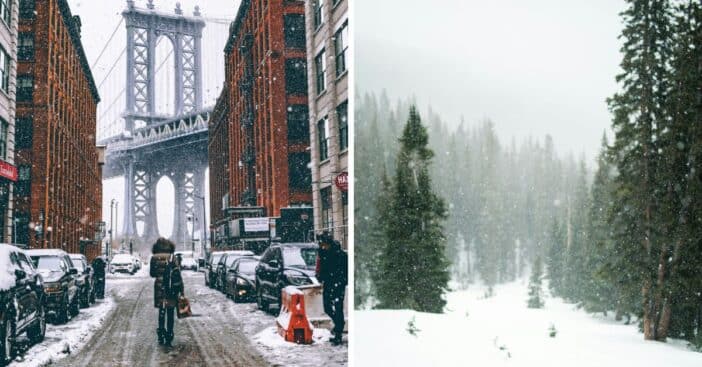
The changing months usually mean a change in how we get by, and for the 2024-2025 winter season, the Old Farmer’s Almanac warns that just about everyone is in for a rough time. Areas that could rely on ignoring the cold will have to contend with it, while winter getaways will actually make for lackluster landscapes in the coming months.
The annual periodical has been circulating in the U.S. since the late 1700s. In addition to long-range weather predictions, it includes calendars, full moon dates, helpful remedies for various ailments, folklore, and outdoor activity ideas. What does the Old Farmers’ Alamanac predict for this coming winter, and how accurate can we expect this to be?
The Old Farmer’s Almanac predicts an odd, unpleasant winter just in time for the 2025

According to Powder, the predictions for the upcoming winter of 2024 and 2025 anticipate an odd, off color season. Perhaps most striking are the reports that Alaska, New England, Idaho, Minnesota, and Wyoming are in for dry seasons, making those usually scenic winter locales lose some of their seasonal draw. They’re specifically categorized under “Mild Dry.”
RELATED: There Are Still Time And Weather Lines You Can Call On The Phone
The Pacific Northwest, along with Colorado and West Virginia ought to brace for “Cold, Snowy.” They’ll be great for winter activities, but residents should expect a lot of what defines winter: snow and chill.
Temperatures are expected to drop further than usual around the northeast, while the Ohio Valley should expect more snowfall than usual. Early January is expected to the coldest months, raise a bit in the latter half of the month, then drop again in February.
What to expect when expecting predictions

We rely on weather forecasts all the time for tons of different activities and plans, from small day trips to milestone events. Is something so longterm like the Old Farmer’s Almanac the same, with the same level of reliability? The jury is out…somewhat.

CBS News notes that in the past, the Farmers’ Almanac—a similar but separate publication—predicted that the northeast would be covered in snow while enduring chilly temperatures. Certainly, the temperatures dropped but, CBS News notes, in the end, Boston had one of its least snowy winters in history. That can also be intuited by the presence of an El Niño pattern, which always spells out milder winters for the northeast.
Long-term weather predictions are tricky and any plans made should consider various sources.

